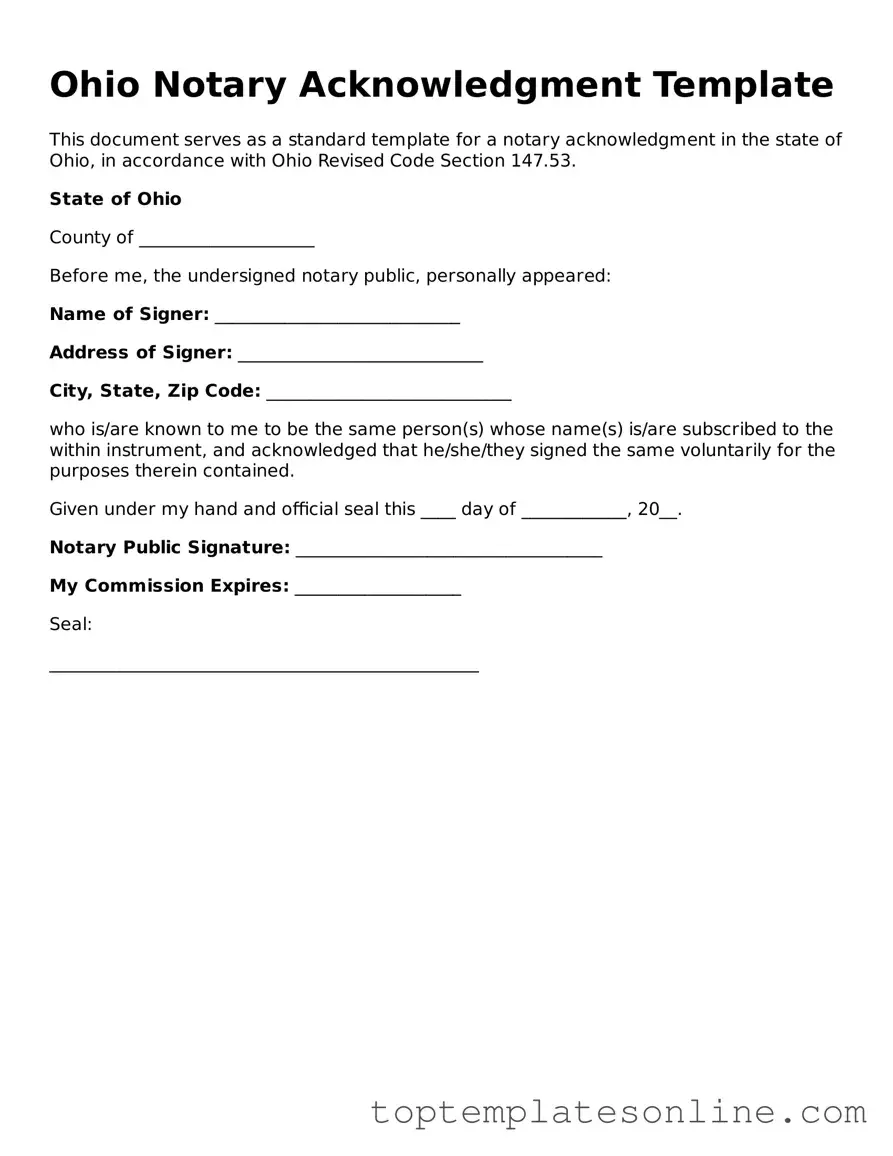Blank Notary Acknowledgement Template for Ohio State
The Ohio Notary Acknowledgement form is a legal document used to verify the identity of individuals signing a document and to confirm that they are doing so willingly. This form serves as proof that the signer appeared before a notary public, who then certifies the authenticity of the signature. Understanding its purpose and requirements is essential for anyone involved in legal transactions in Ohio.
Customize Notary Acknowledgement Here
